Sustainable travel is actually very simple: it’s about traveling in a way that minimizes the impact on our environment. And let’s be honest, that’s something we all want! It’s about making smart choices, such as opting for green modes of transportation and supporting local communities. This way, we ensure that our beautiful planet remains a celebration for future generations as well.
The importance of sustainability cannot be emphasized enough. By making conscious decisions today, we give future travelers the opportunity to enjoy the magnificent places in Europe just as much as we do now. Climate change plays a big role in this; more and more people are choosing to adopt more sustainable methods of travel in order to reduce their ecological footprint.
In this article, we share 6 practical tips for sustainable travel in Europe. Let’s discover together how you can contribute to a greener future while fully enjoying everything that Europe has to offer!
1. Choose Sustainable Transportation: The Train as the Best Option

Train travel offers many advantages over other modes of transportation such as flying and driving. Trains are significantly more environmentally friendly because they emit less CO2 per passenger kilometer compared to airplanes and cars. Train travel also helps reduce traffic congestion, resulting in lower energy consumption and less air pollution.
Benefits of Train Travel:
- Low CO2 emissions: Trains emit up to 8-50 times less CO2 than airplanes, the more kilometers/time, the greater the difference (Klimaathelpdesk.org).
- Comfort and convenience: Spacious seats, no long waiting times at check-in, no restrictions on liquids, and ohh you can simply stretch your legs.
- Scenic routes: Enjoy the beautiful European landscape from your window.
Tips for Planning Train Journeys in Europe:
- Book early: Booking early can result in cheaper fares and more availability.
- Use Rail Passes: Consider an Interrail or Eurail Pass for unlimited travel within certain periods.
- Plan your route carefully: Use a website like chronotrains.com which provides a map showing how far you can travel from each station in Europe in less than 8 hours.
With these tips, you can not only travel more sustainably, but also enjoy a more comfortable and adventurous journey through Europe!
2. Discover Europe by Bike
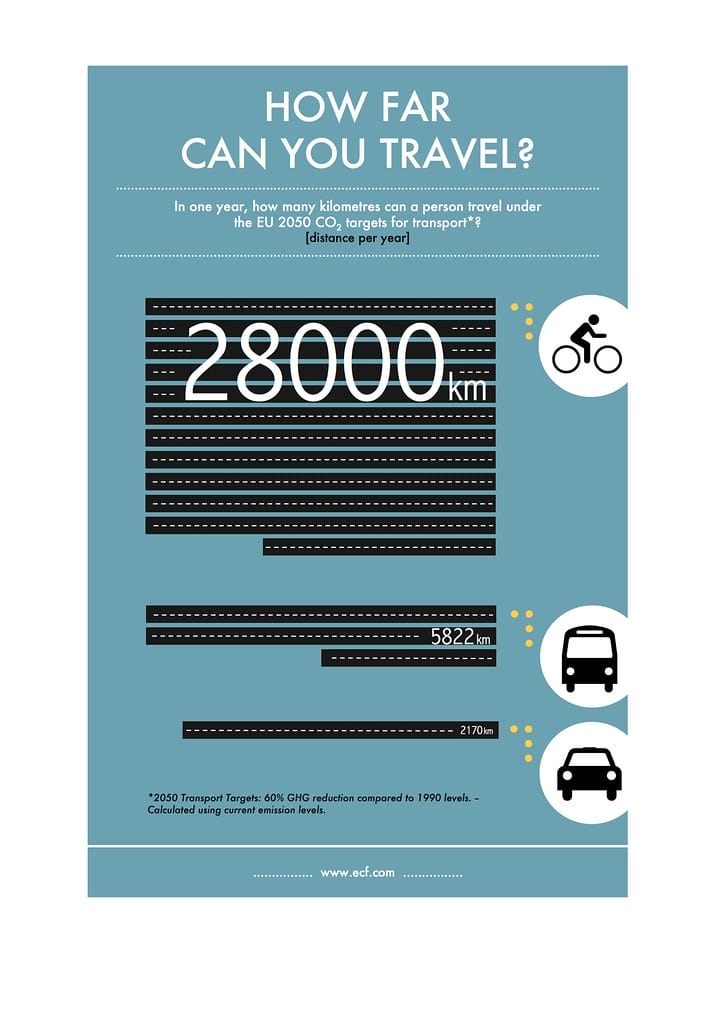
Traveling by bike is a fantastic way to explore Europe, especially if you value sustainability. In the Netherlands, where bike paths are popping up like mushrooms and the infrastructure is top-notch, you can enjoy breathtaking routes through bustling cities and picturesque rural areas.
There are endless possibilities for bike tours, not only in the Netherlands but also in other European countries:
- Netherlands: Think about the LF routes (National Cycling Routes) that will take you from the lively Amsterdam to historical cities like Utrecht and Maastricht. You will pass by the most beautiful places!
- Germany: The Elbe Cycle Path offers a wonderful route along the Elbe River; perfect for a day of cycling with a picnic along the way.
- France: Discover the enchanting Loire Valley with its impressive castles or follow the iconic Tour de France routes and feel like a real cyclist.
Benefits of Cycling
Cycling not only brings benefits to the environment, but also works wonders for your personal health:
- Environment: Every kilometer you cycle instead of drive helps to reduce CO2 emissions. Cycling is truly one of the greenest ways to travel.
- Health: Regular cycling improves your fitness, strengthens your muscles, and helps relieve stress. Plus, it’s just fun!
So what are you waiting for? Get on that bike and go on an adventure!
“Flip’s tip: Use the EuroVelo route planner for your cycling trip through Europe. The EuroVelo bicycle route planner helps in planning long-distance cycling routes in Europe, connecting different countries and providing information about distance and attractions.”
3. Offset Your CO2 Emissions for Air Travel

CO2 offsetting is a way to neutralize the ecological impact of your air travel. You can do this by investing in projects that reduce or compensate for greenhouse gas emissions. These projects can range from reforestation to sustainable energy initiatives.
How to Contribute to Sustainability?
By investing in sustainable projects:
- Reforestation: Contributing to projects that plant trees, which helps absorb CO2 from the atmosphere.
- Sustainable energy: Supporting solar and wind energy projects that replace fossil fuels.
- Energy efficiency: Investing in technologies and programs that reduce energy waste.
There are various platforms and organizations where you can offset your CO2 emissions, such as Regreener. This way, you can minimize your ecological impact and contribute to a more sustainable future.
4. Stay in Sustainable Accommodations During Your Trip
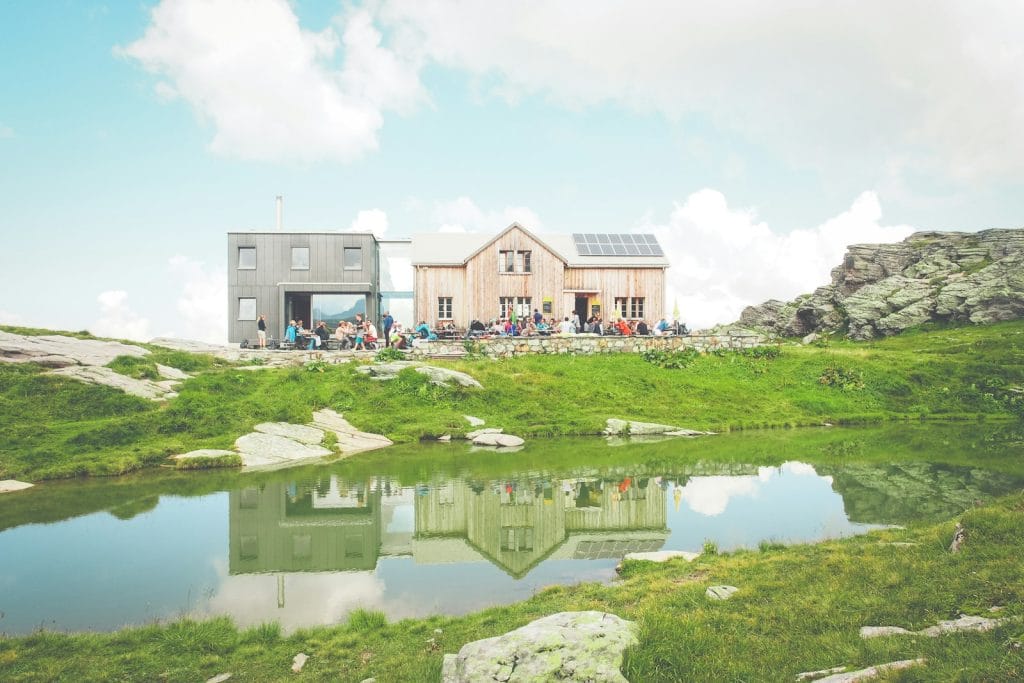
When planning a sustainable trip through Europe, choosing sustainable accommodations is an important step. These accommodations are designed to minimize their environmental impact and promote responsible tourism.
How to find sustainable accommodations in Europe?
- Use websites like EcoBnB or Green Pearls, which specialize in eco-friendly options.
- Look for certifications such as the Green Key or EU Ecolabel, which indicate that the accommodation meets strict environmental standards.
- Read reviews and directly inquire with the accommodation about how they ensure sustainability.
Examples of eco-friendly hotels and farms
- In Portugal, you can stay at Herdade da Matinha, a farm hotel that offers organic meals and uses solar energy.
- In Germany, the Bio-Hotel Sturm offers a fully organic restaurant, energy-saving measures, and extensive recycling programs.
5. Enjoy Local Food and Culture

Sustainable travel goes hand in hand with experiencing local cuisine and discovering the regional culture. Local restaurants and markets are truly the heroes in reducing the ecological impact of our food transportation. By choosing dishes made with locally sourced ingredients, you not only boost the local economy, but also help to reduce that pesky CO2 emissions generated from transporting food over long distances.
Local markets are often a treasure trove of fresh produce, straight from the farmer. You can savor authentic flavors and regional specialties at their best! Just think of a delightful paella in Spain, the irresistible moules-frites in Belgium, or those delicious pastéis de nata in Portugal. These culinary adventures make your trip even more memorable and contribute in their own way to a more sustainable world.
Tips for Sustainable Eating While Traveling:
- Visit local markets: Discover the fresh, seasonal products waiting to be tasted.
- Choose restaurants with a sustainable philosophy: Look out for certifications such as organic or fair trade.
- Try regional specialties: Support traditional eating habits and reduce transport distances.
6. Apply Zero Waste Travel with Sustainable Habits
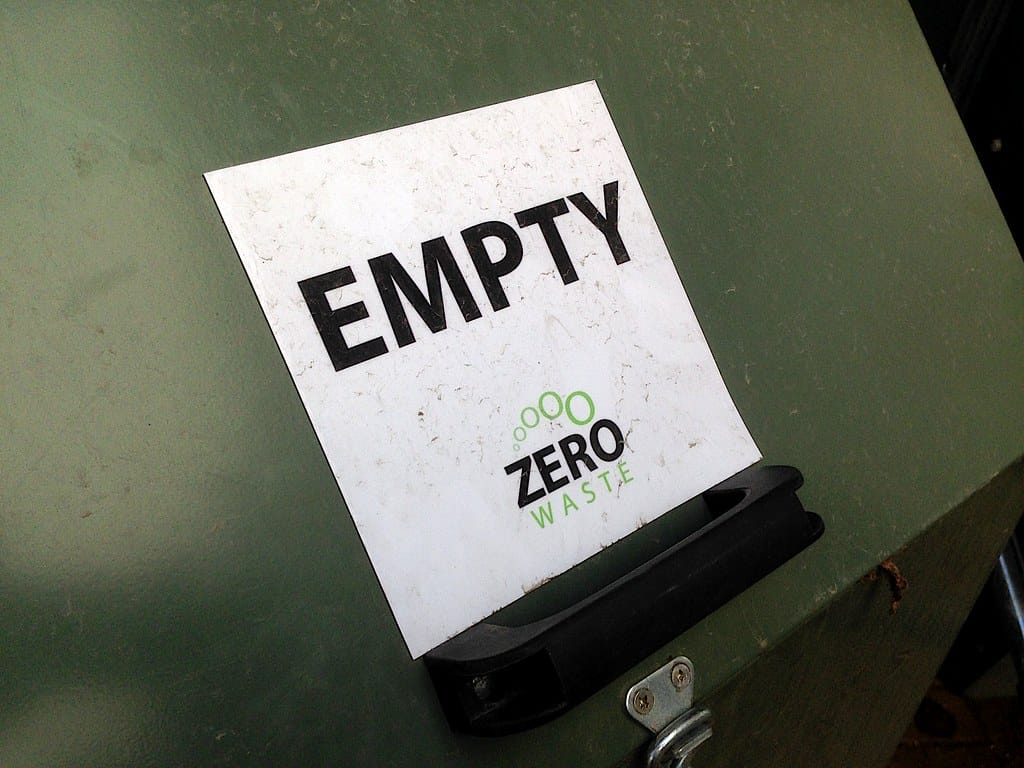
Zero waste travel is truly a fantastic way to contribute to sustainability during your adventures in Europe! Let’s take a look together at a few handy tips that will help you get started:
- Use reusable products: Always bring your own water bottle, coffee cup, and shopping bag. Not only is this good for the planet, but it’s also super convenient and often cheaper than constantly buying new bottles or cups. Win-win, right?
- Pack smartly: Think about using reusable containers for your snacks and meals. Instead of plastic bags or foil, you can opt for silicone bags or stainless steel containers. This keeps your food fresh and better for the environment!
- Avoid disposable plastic: Say a firm no to plastic straws, cutlery, and tableware. Fortunately, many European cities offer alternatives such as bamboo or biodegradable utensils. This way, you can make a positive impact without sacrificing convenience!
What is Important to Consider When Traveling Through Europe?
Visa & travel documents
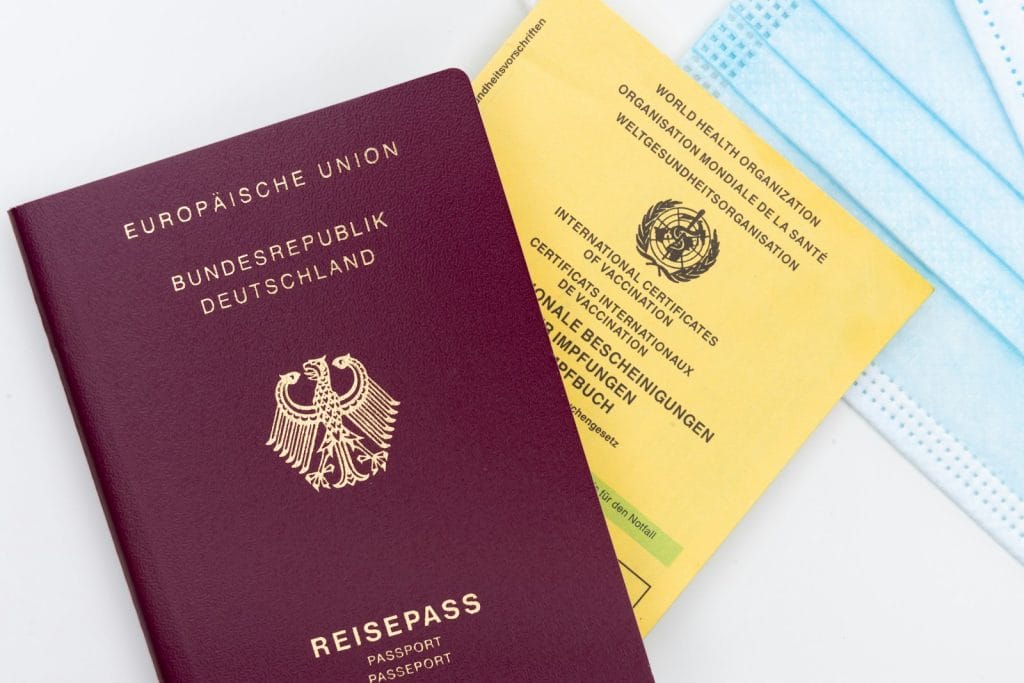
Traveling through Europe can truly be an adventure! But believe me, it is super important to be well-prepared for the rules and requirements of each country you want to visit. Here are a few key points to keep in mind:
- Check the visa requirements: Depending on where you’re from, you may need a visa to enter certain European countries. The Schengen countries have their own rules, and not all European countries are part of the Schengen area. So make sure to check carefully!
- Passport validity: Ensure that your passport is valid for at least six months from the date of your departure. Many countries are quite strict about this, so it’s better to check before you travel.
- Duration of stay: In most Schengen countries, tourists are allowed to stay for a maximum of 90 days within a period of 180 days without a visa. Plan your trip wisely to avoid exceeding this limit. A little calculation won’t hurt!
- Keep documents handy: Make sure to always have a copy of your passport and visa with you, in case you lose the originals. This can also be useful when checking in at hotels or renting a car. You never know!
- Travel insurance: Although not necessarily a visa requirement, it is definitely wise to take out a good travel insurance policy that covers both medical expenses and any cancellations. That way, you can travel with peace of mind!
By arranging everything related to your visa and travel documents properly, you can avoid a lot of stress and enjoy all the wonderful adventures that Europe has to offer!
Currency & Budgeting
When traveling through Europe, it’s useful to have knowledge of the different currencies you will encounter. In many countries, such as Germany, France, and Spain, the euro is used, but in other countries like Switzerland (Swiss franc) and Denmark (Danish krone), different currencies apply.
Some tips for budgeting:
- Use a travel budget app: This will help you track and plan your expenses.
- Avoid high exchange rate fees: Use local ATMs or pay with a credit card without extra charges, or use a Wise account.
- Local markets: A great place to find affordable meals and souvenirs.
A good preparation ensures that you don’t have to worry about unexpected costs during your trip.
Transportation
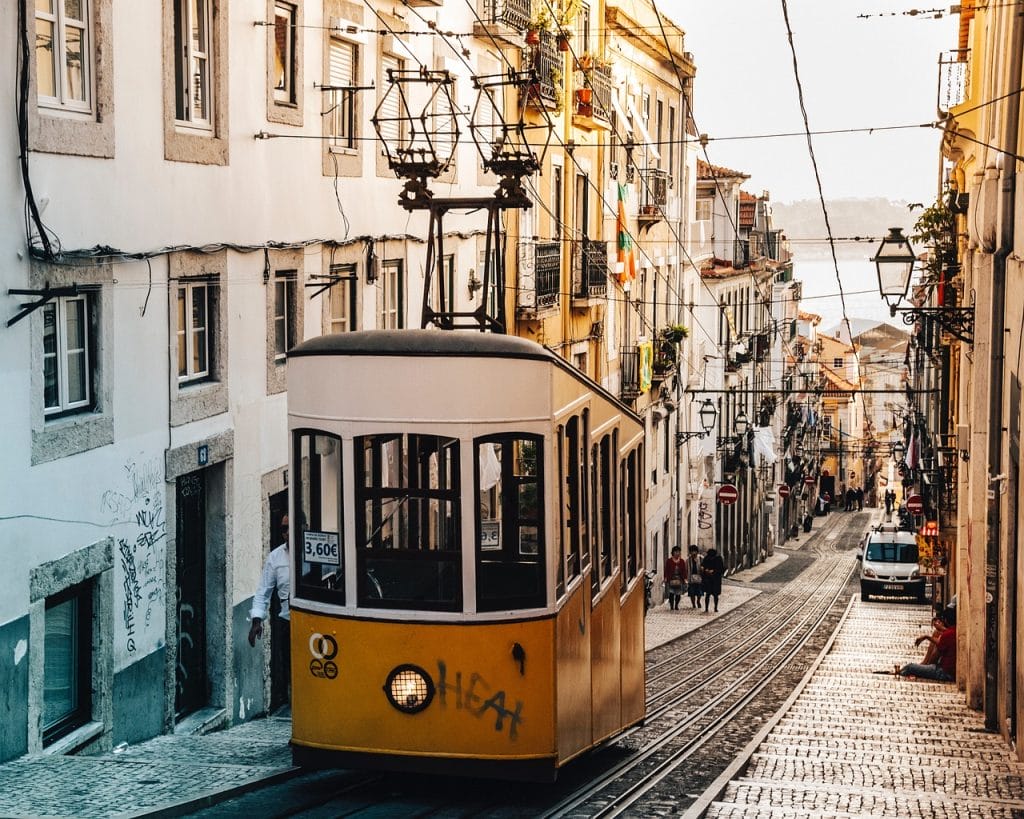
Traveling through Europe offers numerous transportation options. Public transportation such as trains and buses are not only environmentally friendly, but also often the most efficient way to explore cities. For shorter distances, bike sharing and electric scooters are excellent choices that are both sustainable and fun. Consider also carpooling or renting an electric car for more flexibility during your trip. Don’t forget to plan ahead and use local apps for up-to-date information on routes and schedules.
Local Customs & Holidays
When traveling through Europe, it pays off to immerse yourself in the local customs and holidays. Each country has unique traditions and celebrations that enrich your travel experience.
Traveling through Europe means encountering a wide range of cultures and traditions. It is important to show respect for local customs and practices:
- Greetings: In some countries like France and Italy, it is customary to greet people with a kiss on the cheek.
- Dress code: When visiting religious places such as churches or mosques, make sure to dress appropriately.
- Eating habits: Try to adopt local eating habits. In Spain, for example, people often eat dinner later in the evening.
- Holidays: Think of King’s Day in the Netherlands or Oktoberfest in Germany. When you celebrate these holidays with the local population, you truly experience the authentic atmosphere and conviviality!
By making these small adjustments, you show respect for the local culture and enhance your travel experience.
Health & Safety
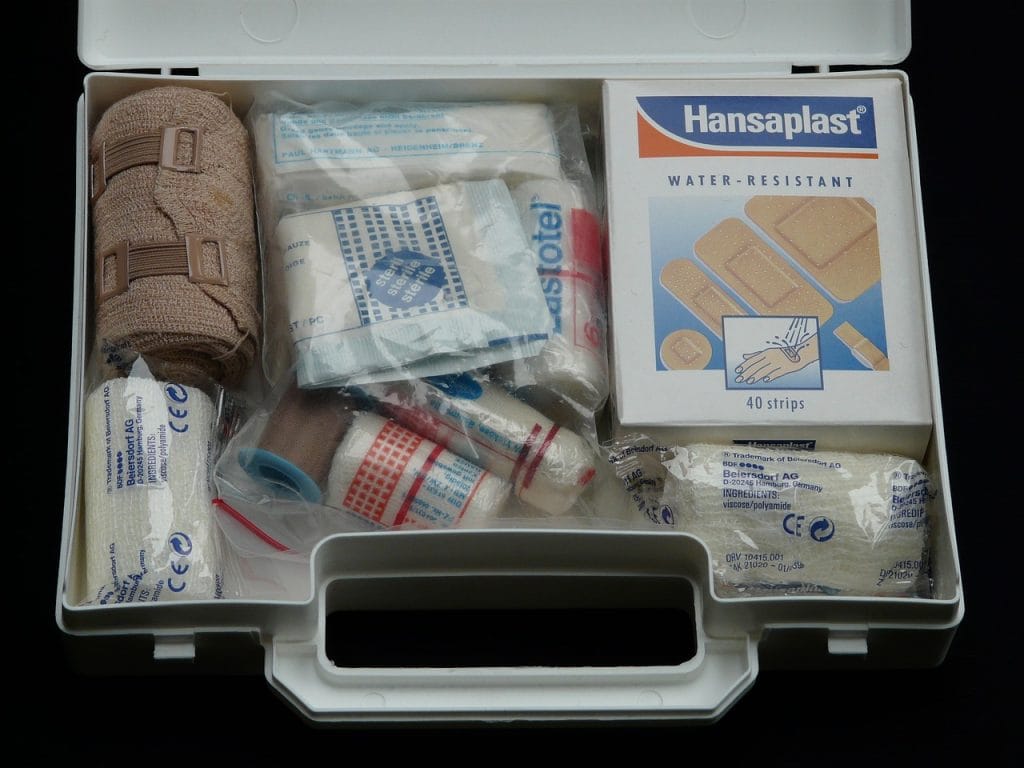
When traveling through Europe, health and safety are naturally important. It’s always a smart idea to bring a first aid kit for those small accidents and some medication for emergencies. Don’t forget to check in advance if your travel insurance covers medical expenses abroad – it can save you a lot of hassle and worries!
Tips for health and safety:
- First aid kit: Make sure your first aid kit is well stocked with band-aids, disinfectant, and painkillers. You never know when you might need them!
- Travel insurance: Take a moment to check if your insurance also covers medical expenses – it gives a nice reassuring feeling.
- Local emergency number: Note down the local emergency number, such as 112 in Europe. It’s always handy to have this at hand.
And don’t forget to stay informed about any health advice or warnings in the areas you visit. This way, you can enjoy your adventure with peace of mind!
Is Europe Safe for Solo Travel?
For many travelers, safety is an important consideration, especially when they are going solo. Fortunately, Europe is known as a relatively safe destination for solo travelers. Here are some reasons why:
- Low crime rates: Many European countries have low crime rates, especially compared to other parts of the world. Cities like Reykjavik, Helsinki, and Vienna are known for their safety.
- Good public transportation: Europe has a well-developed network of public transportation. Trains, buses, and metros are often reliable and clean, making it easy to travel safely from one place to another.
- Hospitable population: In general, Europeans are friendly and helpful towards tourists. This means you can expect assistance if you get lost or have questions.
- Good healthcare: Most European countries offer excellent healthcare facilities, which is reassuring in case you need medical assistance during your trip.
Tips for Safe Solo Travel in Europe
- Stay connected: Make sure you always have a charged phone with you and that someone back home knows where you are.
- Be aware of your surroundings: Pay attention to your belongings and be alert in busy tourist areas where pickpockets can be active.
- Avoid remote areas at night: It’s always wise to choose well-lit and crowded areas to walk around at night.
Solo traveling through Europe can be an enriching experience. By taking some simple precautions, you can enjoy everything this diverse continent has to offer.
When is the Best Time to Travel in Europe?

Choosing the right time to travel to Europe can significantly enhance your experience. Each season offers unique benefits, but traveling to Europe in the spring is one of the most popular options. The advantages of spring:
- Mild weather: The temperatures are pleasant, which is ideal for sightseeing and outdoor activities.
- Less crowds: Many tourist destinations are less crowded than in the summer months.
- Beautiful nature: Flowers are in bloom and landscapes are fresh and green, perfect for nature lovers.
Other seasons
- Summer: Ideal for beach vacations and festivals, but be prepared for larger crowds and higher prices.
- Autumn: Beautiful autumn colors and wine festivals make this season attractive for travelers who love culture and nature.
- Winter: Perfect for winter sports enthusiasts and people who want to enjoy Christmas markets and winter coziness.
Traveling to Europe offers beautiful experiences throughout the year. Whether you choose the spring blossoms or winter wonderlands, each season has something special to offer.
So here are the tips and tricks on how to travel to or through Europe in a sustainable fashion. Read more about sustainable travel tips.
So, go ahead and enjoy all the beauty that Europe has to offer, but try to do it consciously and in a way that helps to preserve the beauty of Europe (and the rest of the world)!



